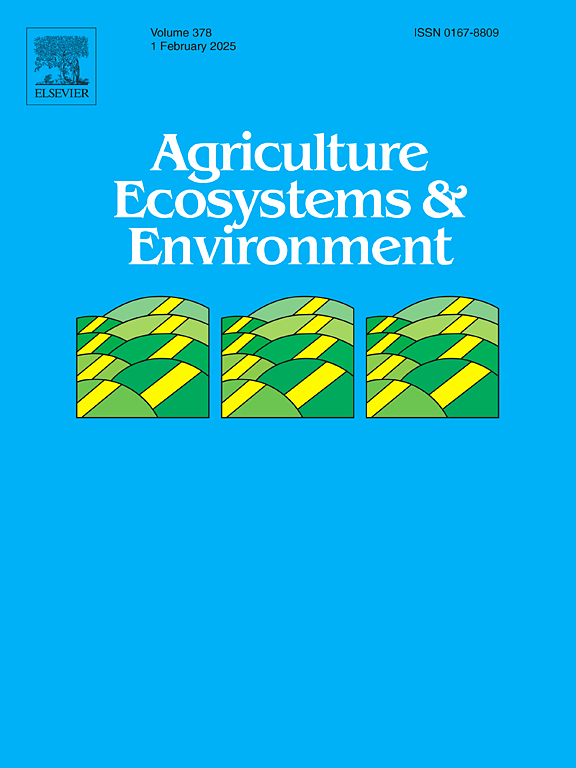Context dependencies in the responses of plant biomass and surface soil organic carbon content to nitrogen addition and precipitation change within alpine grasslands
IF 6
1区 农林科学
Q1 AGRICULTURE, MULTIDISCIPLINARY
引用次数: 0
Abstract
Alpine grasslands store vast amounts of organic carbon and are susceptible to global change. However, the responses of ecosystem carbon storage to synchronous atmospheric nitrogen deposition and altered precipitation regimes, along with the potential environmental mechanisms, remain uncertain. Here, we investigated the responses of aboveground and belowground biomass (AGB and BGB, respectively) and surface (0 −10 cm) soil organic carbon content (SOCC) to nitrogen addition (slow-release urea, 10 g m–2 year–1) and changing precipitation (50 % increases and decreases, respectively) via a coordinated experiment distributed across three alpine grasslands (dense alpine meadow from 2017 to 2022, alpine meadow from 2017 to 2020, and alpine steppe from 2017 to 2020) on the Qinghai-Tibetan Plateau. Nitrogen-related treatments increased AGB significantly (by 20.9 %−25.1 %) in the dense alpine meadow, and the treatment of nitrogen addition plus a 50 % decrease in precipitation (N − 50 %) increased AGB by 59.8 % in the alpine steppe, when compared with the control. The N − 50 % treatment increased BGB (by 29.8 %) only in the dense alpine meadow. The SOCC of alpine grasslands exhibited an undetectable response to all treatments. Random forest model analysis showed that the spatiotemporal variations of the response ratio (RR) of AGB, BGB, and SOCC were jointly controlled by air temperature and their context (the mean values of the respective controls). Piecewise structural equation modeling confirmed the effects of context and further revealed that the RR of SOCC was balanced by the negative effects of SOCC context and positive effects of the RR of AGB. Variation partitioning analysis consistently showed that the RR of ecosystem carbon storage was regulated by the intersections of context combined with climate and treatment, rather than by individual effects. Our findings reveal a higher stabilization of belowground properties than aboveground biomass to short-term nitrogen addition and precipitation change within alpine grasslands. These results highlight the importance of context and temperature in terms of future climate impacts on alpine grassland ecosystem carbon storage.
求助全文
约1分钟内获得全文
求助全文
来源期刊

Agriculture, Ecosystems & Environment
环境科学-环境科学
CiteScore
11.70
自引率
9.10%
发文量
392
审稿时长
26 days
期刊介绍:
Agriculture, Ecosystems and Environment publishes scientific articles dealing with the interface between agroecosystems and the natural environment, specifically how agriculture influences the environment and how changes in that environment impact agroecosystems. Preference is given to papers from experimental and observational research at the field, system or landscape level, from studies that enhance our understanding of processes using data-based biophysical modelling, and papers that bridge scientific disciplines and integrate knowledge. All papers should be placed in an international or wide comparative context.
 求助内容:
求助内容: 应助结果提醒方式:
应助结果提醒方式:


